Published:
Author: Antonio Maria Guerra
Argentinian Asado
HISTORY, INFO, PLACES, INTERESTING FACTS

Asado is, without doubt, the most typical Argentinian food: enjoying it in company of the local people gives the opportunity to understand the true spirit of the country. Let’s deepen the knowledge of this delicious specialty, finding out its fascinating history and how it’s made. Let’s visit the most traditional restaurant to savor its original taste.

The history of Argentinian Asado.
 The literal translation of the word ‘asado’ is ‘roasted’. Centuries ago, the Spanish colonizers spread their passion for this method of cooking to the peoples of South America. A passion that took root almost immediately, also thanks to the great quality of the beef cattle that still today graze on the vast Pampa plains. So, it’s probably not by chance that the ‘gauchos’, drovers and undisputed masters of these plains, were the first Argentine ‘asadores’ (*1).
The literal translation of the word ‘asado’ is ‘roasted’. Centuries ago, the Spanish colonizers spread their passion for this method of cooking to the peoples of South America. A passion that took root almost immediately, also thanks to the great quality of the beef cattle that still today graze on the vast Pampa plains. So, it’s probably not by chance that the ‘gauchos’, drovers and undisputed masters of these plains, were the first Argentine ‘asadores’ (*1).
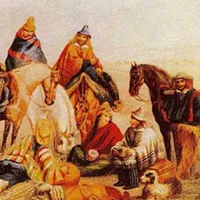 The gauchos were Creole people (‘criolla’), born from the union of the European settlers and the local natives: very poor, but also very proud and independent. They survived thanks to their legendary skill as horsemen, gathering wild cattle and selling it in the cities. The lack of money forced them to eat a lot of meat, the only resource they had in abundance: this is probably why they became so good at cooking it. The technique they used is known as ‘a la cruz’ and consists in attaching the animal to a cross-shaped support, stuck in the ground in an oblique position, inclined toward the fire but not too near it. This way its meat is cooked very slowly and stays tender, juicy and tasteful: the result is simply delicious, a must for all those who like this kind of preparations.
The gauchos were Creole people (‘criolla’), born from the union of the European settlers and the local natives: very poor, but also very proud and independent. They survived thanks to their legendary skill as horsemen, gathering wild cattle and selling it in the cities. The lack of money forced them to eat a lot of meat, the only resource they had in abundance: this is probably why they became so good at cooking it. The technique they used is known as ‘a la cruz’ and consists in attaching the animal to a cross-shaped support, stuck in the ground in an oblique position, inclined toward the fire but not too near it. This way its meat is cooked very slowly and stays tender, juicy and tasteful: the result is simply delicious, a must for all those who like this kind of preparations.
Notes:
*1: ‘Asadores’: specialists in cooking asado.
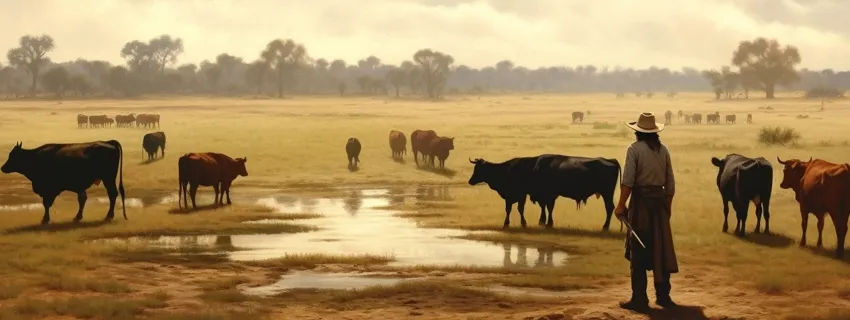
The Pampas, birthplace of Argentinian Asado.
The ‘Pampas’, home of the gauchos, derive their name from a Quechua word whose meaning is ‘plains’. They include parts of Argentina, Uruguay and Brazil.

Where to eat the original Argentinian Asado?
It’s quite difficult to determine which is the most ancient Argentine restaurant preparing Asado. Until we find it out, please refer to the following list including some of the most traditional places in Buenos Aires.
Read more
- Don Julio Parrilla
Guatemala 4691 (esquina Gurruchaga) Palermo Viejo, C.A.B.A. – Argentina
Official website; - La Carniceria
Thames 2317, C1425FIG CABA – Argentina; - La Cabrera
Cabrera 5099, Palermo, Buenos Aires – Argentina Official website;

The meat for Argentinian Asado.
Asado can be prepared using the gaucho’s method (‘a la cruz’), attaching a beef or a lamb to a cross and exposing it to the fire, or using a ‘parrilla’, the classic grill.
A ‘parrillada’(*1) usually includes beef, pork (‘cerdo’), chicken (‘pollo’) and lamb (‘cordero’).
Beef is the true heart of an Argentine asado.
The mostly used cuts are:
- The ‘Vacio’ (part of the flank);
- The ‘Matambre’ (the abdominal muscles);
- The ‘Costillas’ (the ribs);
- The ‘Lomo’ (the filet);
- The ‘Achuras’ (beef offals);
The ‘bife de chorizo’, the classic steak made with the loin cut, can be served as well.
 Pork is also a very important part of the asado, with delicacies like:
Pork is also a very important part of the asado, with delicacies like:
- The ‘chorizos’: the classic sausages;
- The ‘costillas’: the ribs;
- The ‘morcillas’: sausages filled with blood;
Some ‘exotic’ types of asado may include the meat of animals like wild horse (‘potro’) and goat (‘cabra’).
Note:
*1: The ‘choriceata’, made just with pork sausages, and the ‘polleada’, made just with chicken, cannot be considered proper ‘asado’.

Music for Argentinian Asado.
Here follows some traditional Argentine songs to get in the mood of the Pampa and to accompany a delicious asado:

The origins of the name ‘Asado’.
There is no certain information about the origins of the word ‘asado’. Its similarity with ‘gauderio’ is quite evident.
Some scholars think that the term may derive:
- From the Chechua ‘huachu’: whose translation is ‘orphan’, ‘vagabond’;
- From the Arab ‘chaucho’: whose translation is ‘leather whip’;
- From the Moorish ‘hawsh’: whose translation is ‘wanderer’;
- From the Latin ‘gaudeus’: whose translation is ‘joy’;

The cooking methods for Argentinian Asado.
Here follows a brief list of the cooking methods generally used in Argentina to make Asado:
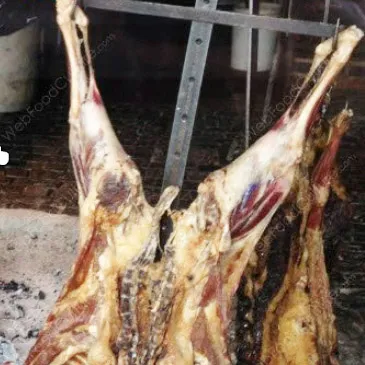 Asado ‘a la cruz’:
Asado ‘a la cruz’:
This cooking method takes its name from the traditional cross-shaped support used by the gauchos. The ‘asado con cuero’ is prepared without skinning the animal: this way the meat keeps a great part of the liquids and remains juicy. Taking away the skin, the cooking is much faster, but the final result is not as good.
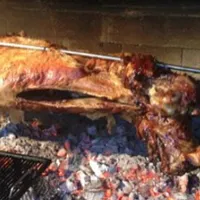 Asado ‘al palo’:
Asado ‘al palo’:
The method known as ‘al palo’ (on a spit), is used especially in the Chilean Patagonia to cook lamb (‘cordero al palo’) and pig. A steel or wooden spit (the ‘palo’) runs through the entire animal and is placed near the embers in a horizontal or oblique position.
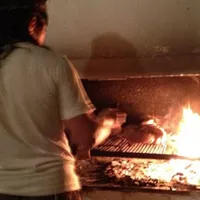 Asado ‘a la parrilla’:
Asado ‘a la parrilla’:
The method known as ‘al palo’ (on a spit), is used especially in the Chilean Patagonia to cook lamb (‘cordero al palo’) and pig. A steel or wooden spit (the ‘palo’) runs through the entire animal and is placed near the embers in a horizontal or oblique position.
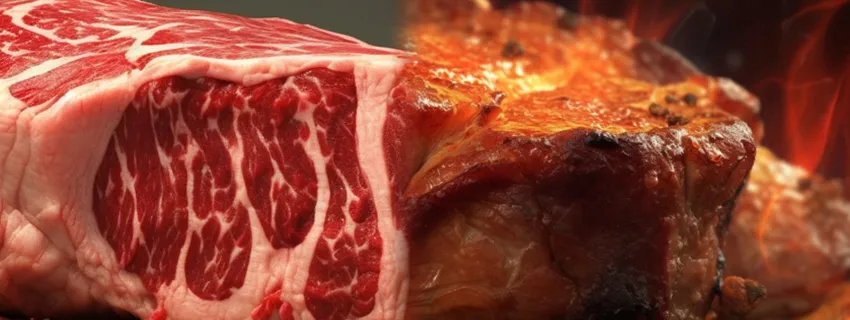
The doneness of Argentinian Asado meat.
In Argentina, when Asado meat, it’s necessary to specify its degree of cooking, using one of these words:
Read more
- ‘Ben cocida’: stands for ‘well done’;
- ‘Al punto’: stands for ‘medium well’ or ‘well’;
- ‘Jugosa’: stands for ‘medium rare’;
- ‘Vuelta vuelta’: stands for ‘rare’;
- ‘Crura’: stands for ‘extra rare’ or ‘blue’;
It’s important to stress the fact that, generally, the Argentines don’t appreciate very much to eat rare meat.

Un ‘aplauso para el asador!’
Argentines appreciate meat slowly cooked, that stays moist and tender on the inside. The ‘parrilla’, the classic grill, is generally preferred to the cross-shaped support used by the gauchos.
Read more
It’s a tradition that, when the meal is over if the guests have enjoyed the food, they congratulare the cook saying all together:
“Un aplauso para el asador”
(“An applause for the asador”)

Gauchos: the soul of a nation.
The people known as ‘gauchos’, initially treated with suspicion, in time became heroic figures, acquiring an immortal place in the imagination of every Argentinean. To fully understand the reasons for such a surprising evolution, it’s necessary to approach their myth: the first step is to study their origins, deepening the knowledge of the ‘gauderios’, their closest relatives.
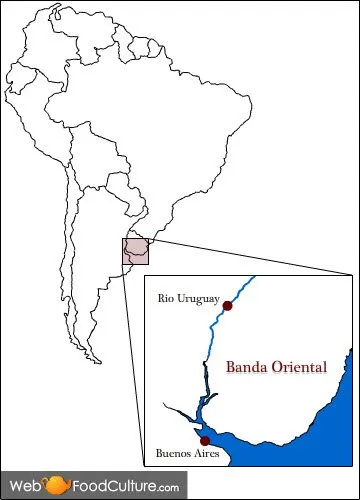 The ‘gauderios’: The ‘gauderios’ were an ethnically mixed group of people. During the Seventeenth Century, they lived in a region known as the ‘Banda Oriental’. Located east of the Uruguay River and north of the Rio de la Plata, at that time this area was right between the domains of Spain and Portugal: for this reason, it was almost completely ignored by both countries and got the nickname of ‘nobody’s land’.
The ‘gauderios’: The ‘gauderios’ were an ethnically mixed group of people. During the Seventeenth Century, they lived in a region known as the ‘Banda Oriental’. Located east of the Uruguay River and north of the Rio de la Plata, at that time this area was right between the domains of Spain and Portugal: for this reason, it was almost completely ignored by both countries and got the nickname of ‘nobody’s land’.
The Gauderios prospered in this place, thanks to their good relations with the indigenous population, cattle trading and smuggling: an illegal business made much easier by the lack of controls at the border.
Read more
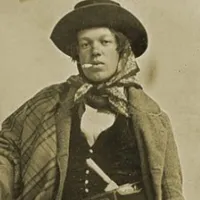 The first ‘gauchos’: The word ‘gaucho’ started to be used at the beginning of the Eighteenth Century for a part of the Creole population characterized by an attitude highly independent and unwilling to submit to the rules. They were under many aspects the heirs of the gauderios and, as such, they had a very bad reputation, being considered at best a bunch of vagabonds and adventurers, if not bandits and thieves. So it is not surprising that the first record in which appears their name is an official document sent to the authorities in Buenos Aires referring to them as a band of criminals.
The first ‘gauchos’: The word ‘gaucho’ started to be used at the beginning of the Eighteenth Century for a part of the Creole population characterized by an attitude highly independent and unwilling to submit to the rules. They were under many aspects the heirs of the gauderios and, as such, they had a very bad reputation, being considered at best a bunch of vagabonds and adventurers, if not bandits and thieves. So it is not surprising that the first record in which appears their name is an official document sent to the authorities in Buenos Aires referring to them as a band of criminals.
 The mysterious masters of the Pampas: An aura of mystery surrounded the first gauchos: that’s the reason why, at least initially, they inspired fear. In truth, many of them were just common people, trying to escape from poverty and all the rules imposed in the cities. They embraced the freedom and the opportunities offered by the immense plains of the Pampa: wild and desolate places, where no ‘respectable’ citizen was supposed to go. Places where just a few skillful and tenacious horsemen could survive, driving and trading cattle.
The mysterious masters of the Pampas: An aura of mystery surrounded the first gauchos: that’s the reason why, at least initially, they inspired fear. In truth, many of them were just common people, trying to escape from poverty and all the rules imposed in the cities. They embraced the freedom and the opportunities offered by the immense plains of the Pampa: wild and desolate places, where no ‘respectable’ citizen was supposed to go. Places where just a few skillful and tenacious horsemen could survive, driving and trading cattle.
The gaucho and his horse: There are no doubts that horses were essential to living in such a difficult environment: they were without doubts the most precious property of the gauchos. Their skill in riding them became legendary: thanks to the close relationship with these animals, they became the undisputed masters of the Pampas.
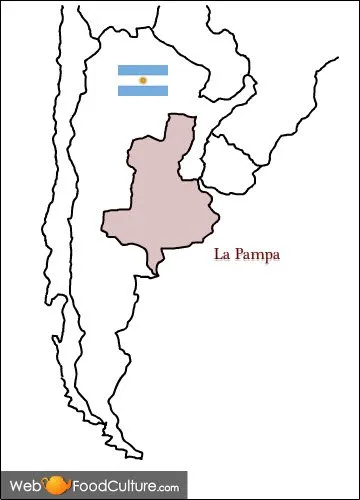 The gauchos fight for freedom: Some historical events helped to mitigate the distrust of the people against these former ‘brigands’, transforming it in genuine admiration. This radical change started at the beginning of the Nineteenth Century, during the Argentine War of Independence. Between 1810 and 1824, they fought with the patriots (‘patriotas’) against the royalists (‘realistas’), supporters of the colonizing nations. They had no uniform and could be distinguished from the other soldiers for the ‘poncho’: a sort of blanket, part of their typical clothing. They fought as irregular troops: it was immediately clear the great value of their riding skill for the war effort. They were just perfect to perform guerrilla actions and reconnaissance missions, where their great knowledge of the territory proved to be a huge advantage against the enemy. The military campaign fought by the gaucho troops of the General Martin Miguel de Guemes, the ‘infernales’, to repel the royalist army from the Province of Salta, took the name of ‘gaucho war’.
The gauchos fight for freedom: Some historical events helped to mitigate the distrust of the people against these former ‘brigands’, transforming it in genuine admiration. This radical change started at the beginning of the Nineteenth Century, during the Argentine War of Independence. Between 1810 and 1824, they fought with the patriots (‘patriotas’) against the royalists (‘realistas’), supporters of the colonizing nations. They had no uniform and could be distinguished from the other soldiers for the ‘poncho’: a sort of blanket, part of their typical clothing. They fought as irregular troops: it was immediately clear the great value of their riding skill for the war effort. They were just perfect to perform guerrilla actions and reconnaissance missions, where their great knowledge of the territory proved to be a huge advantage against the enemy. The military campaign fought by the gaucho troops of the General Martin Miguel de Guemes, the ‘infernales’, to repel the royalist army from the Province of Salta, took the name of ‘gaucho war’.
 José Hernández improves the glory of the gauchos: The glory of the gauchos was further increased by literature. In 1872 the famous writer José Hernández published ‘El Gaucho Martín Fierro’: the protagonist of this epic poem defends the ideals of freedom, equality and purity, fighting the tyranny and the corruption of the European colonizers. Thanks to his courage he becomes a true national hero.
José Hernández improves the glory of the gauchos: The glory of the gauchos was further increased by literature. In 1872 the famous writer José Hernández published ‘El Gaucho Martín Fierro’: the protagonist of this epic poem defends the ideals of freedom, equality and purity, fighting the tyranny and the corruption of the European colonizers. Thanks to his courage he becomes a true national hero.
This poem has a huge importance since it is considered the highest example of ‘gaucho literature’.
The gaucho spirit, part of the Argentine soul: The Argentine people recognize in the poem by Hernández his true spirit. A ‘gaucho’ spirit: free, benevolent, romantic and adventurous. A spirit founded on equality and hospitality.

The right beverage for Argentinian Asado.
hat to drink with an asado? Clearly, much depends on the types of meat used to make it.
In general, a good choice is a red wine, medium warm, quite tannic, quite fresh and soft. For example, a Malbec.
- Its alcohol and tannicity balance the succulence of the meat;
- Its acidity balances the fat of the sausages;
- Its softness balances the saltiness;
Copyright information.
The images displayed in this page belong to WebFoodCulture, with the exception of:
Public Domain Images
- El Asado, Ignacio Manzoni (Wikipedia Link) {PD-Art}
- Campesinos y gauchos chilenos (Wikipedia Link) {PD-Art}
- The Gaucho, 1840 (Wikipedia Link);
- Gaucho of the Argentine Republic, 1868 (Wikipedia Link);
- José Hernández, 1875 (Wikipedia Link);




